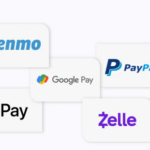This article aims to analyze Web3 and DeFi, the two revolutionary paradigms that are changing the future of the Internet and finance. This shift from the Internet to Web3 symbolizes a more decentralized kind of Internet that puts users at the center with their data, identities, and interactions online.
Blockchain technology powers this decentralized web, bringing in elements like transparency, security, and censorship-resistance. DeFi refers to Decentralized Financing, which is one part of Web3.
It allows traditional financial activities such as borrowing loans or lending money through blockchain networks without having intermediaries such as banks or brokers. Through smart contracts that have predefined conditions for execution
DeFi applications can achieve this inclusivity and effectiveness by automatically executing transactions. Through these innovations on the web and in financial services, people’s lives are being changed by Web3 and DeFi, so they take back control over their data.
What Is Web3?
Web3 is a notion of a distributed internet instead of the centralized manipulation of data and interactions in Web 2.0.
It gives individuals power by allowing them greater control over their digital assets and information.
This paradigm also fosters openness, safety, and anti-censorship. Web3 wants to rebuild the internet with blockchain at its foundation so that it becomes a user-driven environment.
How Does Web3 Work?
Web3 works on blockchains and public ledgers that secure and verify transaction records across different computers.
Intelligent contracts are at the core of Web3 – self-executing agreements with predefined terms written directly into code.
They cut out intermediaries, guaranteeing trustworthiness and quickness in transactions. DApps need smart contracts to work on Web3 platforms as they enable them to become decentralized.
Automation and elimination of central authorities by Web 3 create a new digital age where people can interact more securely, transparently, and inclusively than ever.
What Are The Benefits of Web3 and DeFi?
Decentralization: Web3 and DeFi platforms are meant to reduce reliance on centralized intermediaries to give users more freedom and control.
Transparency: Blockchain networks make transactions transparent and unchangeable, increasing trust and responsibility.
Accessibility: Openness and inclusivity are the hallmarks of Web3 and DeFi platforms because anyone connected to the internet can engage in financial activities through them.
Innovation: By allowing for the conception of financial products or services that were hitherto inconceivable within standard finance, DeFi nurtures creativity.
What Are The Challenges of Web3 and DeFi?
Scalability: Blockchain networks currently experience scalability issues that cause slow operation during peak demand periods and high transaction fees.
Security: DeFi systems can be attacked through intelligent contract bugs; security should be a top priority in their design, and regular audits should be done on them to ensure they remain safe from malicious exploits.
Regulatory Uncertainty: There is still no clear regulatory framework around cryptocurrencies and other digital assets,, creating dificulties when it comes to compliance with regulations by both projects themselves and users who might unknowingly fall foul of these laws.
User Experience: Non-technical users find it difficult to to deal with Web3 because its interaction with DeFi platforms is complex,, making them not widely adopted.
Is Web3 and DeFi The Future of The Internet and Finance?
Web3 and DeFi could completely change the internet and finance if they can overcome some technology, regulation, and usability challenges.
However, they are growing fast and getting more creative, which shows that we are entering an era of decentralized digital systems that are transparent and available to everyone.
They will have to become more scalable, regulated, and user-friendly if they want many people to use them.
But as they change, it becomes more apparent that this is just one step towards making money open for everyone everywhere on earth through their computers or phones, thus changing how we interact online or exchange value digitally.
Conclusion
Web3 and DeFi are significant changes in digital infrastructure and finance. Web3 wants to create a decentralized internet that is user friendly by use of blockchain technology, which ensures data control as well as security enhancement of the digital assets.
On the other hand, Defi systems provide decentralized options for loans, investments, and trade,hings, thereby revolutionizing traditional banking services.
These two, however, have issues such as scaling up their operations due to regulations imposed on them or the need for more user-friendly interfaces, but still, they remain the fastest growing areas, with most innovations pointing towards broader distribution of power in future digital economies where information shall flow freely through different channels without any restrictions whatsoever.








